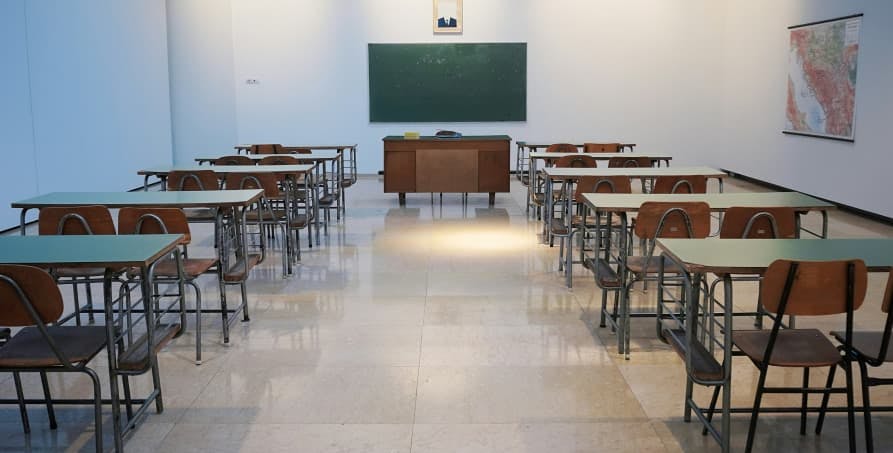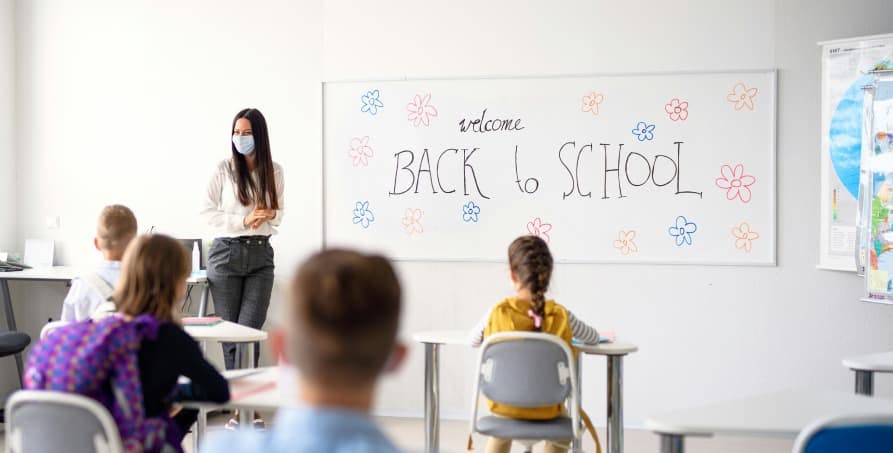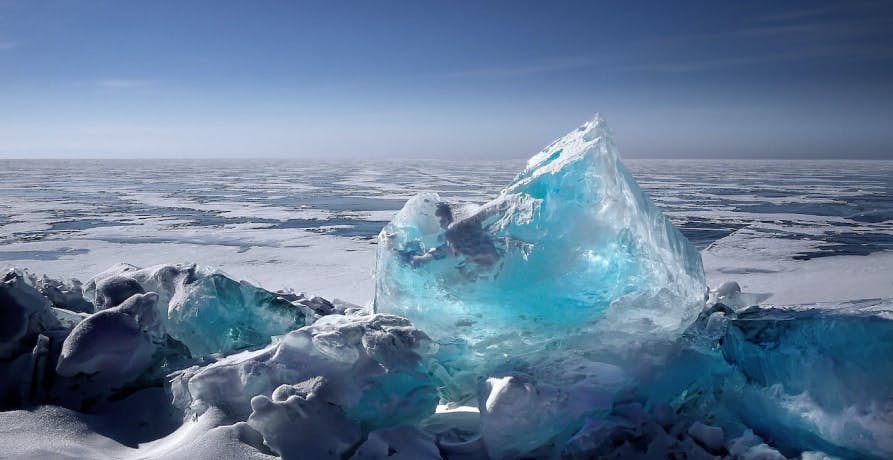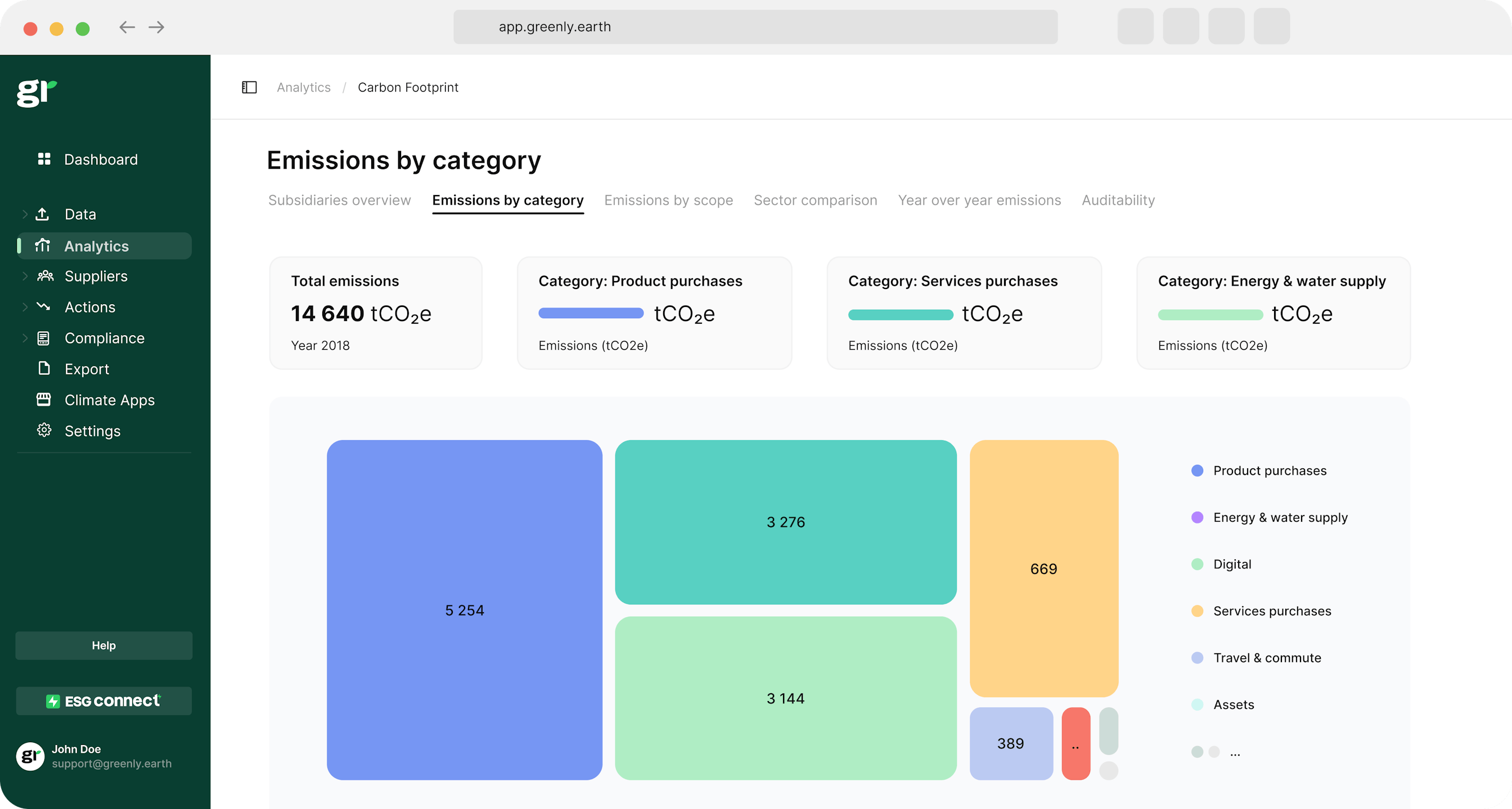ESG / CSR
Industries
How Extreme Heat & Global Warming Impacts K-12 Education



We know that hurricanes and massive snow storms can keep kids out of school, but most are unaware of how extreme heat and global warming itself can have a profound impact on K-12 education.
As of today, a whopping 466 million children around the world live in areas that experience twice as many high temperatures, exceeding over 35 degrees Celsius, in comparison to their grandparents.
As a result, K-12 education across the globe is impacted – which is especially challenging at a time where higher education is becoming essential for younger generations to excel in the job market and maintain financially and personally rewarding careers.
In this article, we’ll explain how heat keeps kids out of schools, the short & long term effects, and how we could help save our children’s education moving forward.
How does extreme heat affect K-12 Education?
Today, we are facing more extreme weather conditions such as intense heat that can prohibit global education from adhering to the necessary standards to ensure children around the world receive an adequate education.
💡Our society burns more fossil fuels than ever before, with a staggering 97 billion barrels of oil being consumed per day in 2021. As a result, it makes it challenging for schools to stay open in the event of poor air quality or other threats to children’s health.
The main threat to K-12 education that extreme heat poses to school systemes is the continued usage of fossil fuels. This is because excess human activity spurred by industrialization continues to increase global temperatures which can make it challenging for public schools to stay open.
Some of the reasons why rising global temperatures can threaten public school systems such as K-12 education include:
- The risk of exposing children to air pollution
- Developing countries which don’t have A/C which could exacerbate the negative effects of suffering during a heatwave
- Reduced learning capacity as extreme temperatures can have an impact on cognitive function
Here’s a table explaining more of the ways that climate change as a whole can impact school systems worldwide:
| Reason | Description |
|---|---|
| Infrastructure Damage | Extreme weather events like hurricanes, floods, and wildfires can damage school buildings, disrupt transportation, and result in costly repairs or temporary closures. |
| Health Risks for Students and Staff | Rising temperatures can lead to heat-related illnesses, particularly in schools without adequate air conditioning, increasing absenteeism and reducing physical activity. |
| Air Quality Issues | Higher temperatures can worsen air pollution and increase allergens, affecting students with respiratory conditions and leading to higher absenteeism. |
| Increased Operational Costs | Schools may face higher energy costs for cooling, putting strain on budgets and diverting funds from educational programs and staffing. |
| Interruption of School Schedules | Extreme weather events can lead to frequent school closures, disrupting the academic calendar and affecting learning continuity. |
| Mental Health Impacts | The stress and anxiety related to extreme weather events and displacement can affect students' mental health, increasing behavioral issues and the need for support services. |
| Disparities in Education Access | Low-income and under-resourced schools are often the most vulnerable, lacking cooling systems and funds for repairs, exacerbating existing educational inequalities. |
| Displacement of Communities | Climate change can lead to community displacement due to disasters, resulting in disrupted education for students who frequently move or attend under-resourced schools. |
| Impacts on School Nutrition Programs | Rising temperatures and droughts can affect food production, increasing meal costs and making it difficult for schools to provide nutritious options for students. |
Here are just a few examples of countries that have struggled to keep their public schools open and fully functioning as a result of global warming:
- Pakistan – This Asian country had to close schools for 26 million children for a week in May 2024 closed schools for half its students, that’s 26 million children due to temperatures exceeding 40 degrees Celsius for over a week.
- Bangladesh – This country was forced to shut school for half of its students during a heatwave in April 2024 – which impacting around 33 million children.
- Philippines – Philippines ordered school closures for two days, when heat reached what the country’s meteorological department called “danger” levels.
What is K-12 Education?
K-12 education, a term most frequently used in the United States, refers to the public education system that carries children from the age of 5-6 until the age of 17-18 when they graduate from high school or any global equivalent.
💡 K-12 education is a massively debated topic in the midst of the 2024 presidential election.
Developing countries around the world may not refer public education to K-12 education, but the concept is the same – as it refers to government funded education for minors. Currently, countries such as Pakistan and other southeast Asian countries are struggling to keep kids in school as a result of extreme temperatures.
This can be a result of the following:
- A lack of funding while trying to rebuild infrastructure for public schools
- Less government funding to adapt to the new global temperatures and how they affect education
- Unhealthy classroom conditions
👉 Global warming creates physical and monetary constraints on education, seeing as it will require schools to incorporate new uses of technology to make the learning environment a safer, healthier place – such as by implementing the use of air conditioning.

What are the short term effects of global warming on education?
There are several short-term effects of extreme heat on K-12 education, such as situational mental health disorders, interruptions in school schedules, and teachers needing to rearrange their curriculum and skip over potentially pivotal subject matters.
These short-term effects of extreme heat not only have an impact on public education in developing countries, but in the United States – too. States such as Massachusetts and Colorado had to employ early dismissal days from K-12 education in the midst of heatwaves.
💡 It’s important to remember that it isn’t only extreme heat that can cause school closures, but that snowstorms, flooding, hurricanes, and other natural disasters can have a negative impact on K-12 education as well. These disruptions to public education are only expected to increase as we near 2050.
Here are some of the additional short-term effects how global warming can negatively impact those seeking public or K-12 education:
- Lack of Social Skills – Students, especially those who are younger, will be able to adapt easily once school is back in session – but the disruptions to education due to global warming could hinder students from making progress in friendships.
- Situational Mental Health Disorders – Although temporary and could be easily resolved once school hours resume per usual, disruptions to public education could provoke situational depression, anxiety, and order mental health disorders for children as a result of newfound loneliness and lack of socialization.
- Disruption to Curriculum – Teachers will need to be adaptable to potential school cancellations and be ready to skip learning materials and rearrange their curriculum to accommodate for shorter or less school days.
- Canceled Extracurricular Activities – Many students will find joy in school as a result of extracurricular activities such as sports, art, music, or theater clubs – but extreme weather events can cause these to be canceled and prohibit students from making additional social progress with their peers.
👉The short-term effects of disrupted education as a result of global warming have a substantial impact on students mental health.

What are the long term effects of global warming on education?
The long-term effects of global warming on education are arguably more severe, seeing as long-term interruptions to K-12 education can include a lack of critical thinking skills and an inability to pursue higher education.
Some of the long-term impacts of global warming on education include:
- Limiting Higher Education Attendance Rates – Think of public or K-12 education as the foundation for success in higher education. If children’s education is constantly disrupted, it can prevent them from receiving all of the necessary building blocks to be successful in college or graduate school. Ultimately, this can also stifle the next generation of children from being able to pursue higher education and improve upon their parents.
- Impact on Economy – As a whole, public K-12 education helps to induce productivity, creativity, and encourage people to pursue their career goals. Without adequate, consistent K-12 education – students will be less able to pursue higher education, enter the workforce, and help contribute to their country’s economic growth.
- Poor Nutrition for Students Long-Term – Nearly 30 million students in the U.S. alone relied on school provided lunches during the 2021-2022 school year. This shows how repeated school closures due to climate change could result in some students becoming malnourished. In addition to this, global droughts as a result of rising temperatures worldwide could make food production more difficult, raise the cost of school meals, and make it even more difficult for students who rely on free or reduced-price breakfast and lunches.
- Difficulty Maintaining School Buildings – Natural disasters such as hurricanes, floods, and wildfires require extensive maintenance to ensure that the buildings remain resilient in the midst of climate change. This can not only prove expensive, but require further school closures for renovation due to ample infrastructure damage.
- More Expensive Utility Bills – Making school bearable during extreme weather will require constant air conditioning or central heating to run through the school building, which could increase the public education system’s operating costs and put a strain on the national government.
- Poses Greater Everyday Health Risks – Students and teachers who will be exposed to poor air quality as a result of excess GHG emissions on a daily basis will become more prone to respiratory diseases and other health risks. This can in turn put a strain on a schools’ healthcare resources.
👉 Overall, the long-term effects of global warming on education could pose serious threats to economic development, health, and future higher learning.

How can we prevent global warming from impacting K-12 education?
The main way to deter global warming from impacting K-12 education is to fight rising global temperatures as a whole, but in the event scorching heat takes precedence over education – there are a few things we can do, such as find safer places to build schools.
💡We must make an effort to preserve in person learning seeing as many young children could not properly learn via remote learning, as studies reveal that it has a negative impact on student’s behavior. Therefore, it’s important we preserve in person learning as much as possible for K-12 education.
Here are some of the ways we could prevent global warming from impact K-12 education:
- Location of Buildings – Unsurprisingly, the location of a school building matters, meaning that it’s important for construction of school buildings to take place away from the coast or somewhere where it is least likely to be affected by a natural disaster.
- Upgrading Infrastructure – Renovating school buildings to utilize green roofs and climate-resilient designs could help to reduce the impact of extreme weather and help promote more comfortable learning environments for students.
- Expand Remote Learning – Although studies show that in person learning is best, remote learning could help broaden the range of learning available to students in the midst of a natural disaster.
- Protect Against Extreme – In the same sense as emergency preparedness, schools should make an effort to develop a plan to ensure curriculum can still be fit into the schedule in the event of an early dismissal. In addition to this, protocols on how to protect students during extreme heat are necessary.
Overall, global warming is undoubtedly eliciting a negative effect on education worldwide – meaning that it’s important we tackle the root of the problem (excess GHG emissions) while also implement fair protocols to protect students’ education today.

What About Greenly?
If reading this article about how extreme heat has an impact on K-12 education has made you interested in reducing your carbon emissions to further fight against climate change – Greenly can help you!
It can be overwhelming to figure out how climate policies could have an impact on your business, but don’t worry – Greenly is here to help. Click here to schedule a demo to see how Greenly can help you find ways to ensure your company is complying with all current and future environmental regulations.
Greenly can help you make an environmental change for the better, starting with a carbon footprint assessment to know how much carbon emissions your company produces.
Click here to learn more about Greenly and how we can help you reduce your carbon footprint.




